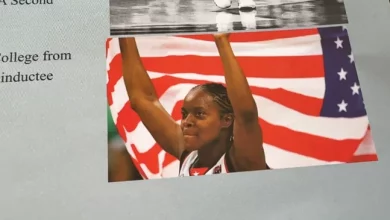Former Celtics champion states Jayson Tatum’s return is promising but challenging, as he must overcome significant hurdles in his recovery from his Achilles tear.

Jayson Tatum, the Boston Celtics’ cornerstone and one of the most talented young stars in the NBA, has faced a significant hurdle in his career: an Achilles tear that sidelined him during a crucial part of the season. While his return is seen as promising for the Celtics’ aspirations, a former Celtics champion emphasizes that the journey back to full health will be fraught with challenges. This assessment underscores the delicate balance between hope and realism in the recovery process of such a serious injury, especially for a player of Tatum’s caliber.
The Significance of Jayson Tatum to the Celtics
Jayson Tatum’s emergence as an elite scorer and leader has been instrumental in Boston’s recent success. Since entering the league in 2017, Tatum has developed into a multi-faceted star, capable of scoring from all areas of the court, defending at a high level, and taking on leadership responsibilities. His ability to perform in clutch moments and carry the offensive load makes him vital to the Celtics’ championship ambitions.
Given his importance, any injury to Tatum raises concerns not only about his health but also about the team’s overall prospects. An Achilles tear, in particular, is a serious injury that requires extensive rehabilitation and can have long-term implications if not managed carefully. Historically, players returning from Achilles injuries often face setbacks, reduced explosiveness, or altered movement patterns, which can impact their performance for years.
The Nature of Achilles Injuries in the NBA
Achilles injuries are among the most feared for basketball players because they involve a critical tendon that plays a central role in jumping, acceleration, and overall lower-body stability. Recovery typically involves surgery (if necessary), followed by months of physical therapy, strength rebuilding, and gradual return to basketball activities.
In recent years, advancements in medical procedures and rehabilitation techniques have improved outcomes for many athletes, but the injury still carries a significant risk of re-injury or performance decline. Players such as Kevin Durant and Kobe Bryant have successfully returned from Achilles tears, but their journeys were arduous, demanding patience, resilience, and meticulous rehab protocols.
The recovery timeline generally spans 9 to 12 months, but this can vary widely based on the severity of the tear, the quality of medical care, and the individual’s response to rehab. For a player like Tatum, who relies heavily on explosiveness and agility, regaining pre-injury levels of performance is a top priority but also a significant challenge.
The Perspective of a Former Celtics Champion
A former Celtics champion, drawing from years of experience and understanding of the franchise’s standards, offers a cautious but hopeful outlook on Tatum’s return. The veteran emphasizes that while the potential for Tatum to come back strong exists, the journey will be riddled with hurdles.
He highlights that Achilles injuries are not just about physical healing; they also involve psychological hurdles. Athletes often grapple with fear of re-injury, confidence issues, and adapting their playing style to compensate for any residual limitations. For Tatum, who plays with an aggressive style that involves jumping, cutting, and sudden stops, these concerns are particularly relevant.
Moreover, the former champion notes that Tatum’s recovery will require a carefully managed process, balancing aggressive rehab with patience. Rushing the return could risk setbacks, while prolonged recovery might impact the team’s immediate goals. The veteran stresses that the Celtics and their medical staff need to prioritize Tatum’s long-term health over short-term gains.
Challenges Tatum Will Face During Recovery
- Physical Rehabilitation and Regaining Explosiveness:
The most evident challenge is restoring strength, flexibility, and explosiveness. The Achilles tendon must be rehabilitated gradually to prevent re-injury, which can be a painstaking process. Tatum will need to rebuild his calf muscles, Achilles tendon strength, and overall lower-body power. This process involves a combination of physiotherapy, strength training, and controlled basketball-specific drills. - Psychological Confidence:
Overcoming the mental barrier of returning from a serious injury is often as difficult as the physical recovery. Tatum might experience hesitation in jumping or making sudden cuts, fearing re-injury. Gaining back confidence will require consistent positive reinforcement and gradual exposure to game-like situations. - Maintaining Conditioning and Endurance:
During rehab, maintaining cardiovascular fitness and overall conditioning is essential. Tatum will need to find ways to stay in shape while avoiding excessive strain on his Achilles. This balancing act requires careful planning to prevent deconditioning or setbacks. - Adjustment to Playing Style:
Post-injury, players sometimes modify their playing style to reduce stress on vulnerable areas. Tatum might need to alter certain movements or limit his explosiveness temporarily. This adjustment could affect his scoring ability and on-court dominance, at least initially. - Team Dynamics and Expectations:
The Celtics will also face the challenge of integrating Tatum back into the lineup smoothly. Ensuring he feels comfortable and confident while managing expectations from teammates, coaches, and fans is critical. The team’s strategy may need to adapt during his rehabilitation period.
The Impact on the Celtics’ Season and Future
Tatum’s return, if successful, could be a significant boost for Boston’s playoff push and championship aspirations. However, the team must navigate this period carefully. Rushing Tatum back too soon could jeopardize his health and the team’s prospects, while delaying his return might hinder their momentum.
The Celtics’ management and coaching staff will need to develop a phased plan for Tatum’s integration, prioritizing his health first. This might mean a cautious approach initially, with minutes restrictions and load management, gradually ramping up as he demonstrates readiness.
From a broader perspective, Tatum’s injury and recovery timeline could influence team strategies, roster decisions, and trade considerations. The franchise might consider additional depth or veteran leadership to mitigate potential setbacks.
Long-Term Outlook and Lessons Learned
Achilles injuries serve as a stark reminder of the physical toll basketball takes on players. Although medical advancements have improved outcomes, they do not guarantee a return to peak form. Tatum’s case will be closely watched as a benchmark for recovery and resilience.
Historically, players who have successfully returned from Achilles tears often report that the experience changed their approach to training, injury prevention, and mental preparedness. Tatum’s recovery could serve as a blueprint for future stars facing similar challenges.
Furthermore, this situation emphasizes the importance of comprehensive injury management, personalized rehab programs, and psychological support. The Celtics’ medical and coaching staff will play a vital role in ensuring Tatum’s return is sustainable.
A Promising Yet Challenging Path Forward
Jayson Tatum’s potential return from his Achilles tear is undoubtedly a beacon of hope for the Boston Celtics and their supporters. His talent, leadership, and scoring prowess could be pivotal in their quest for an NBA championship. However, a seasoned former Celtics champion wisely cautions that the road back will be laden with hurdles—physical, psychological, and strategic.
The injury’s severity means that patience, careful rehabilitation, and a focus on long-term health are essential. While the prospect of seeing Tatum back on the court excites fans, realistic expectations must be maintained. Success will depend on Tatum’s resilience, the support of the Celtics’ medical team, and the team’s ability to adapt during this recovery phase.
Ultimately, Tatum’s journey highlights the resilience of professional athletes and the relentless pursuit of excellence. His recovery story will serve as a testament to perseverance, and if managed well, he can return stronger, more determined, and ready to lead Boston once again toward NBA glory.









